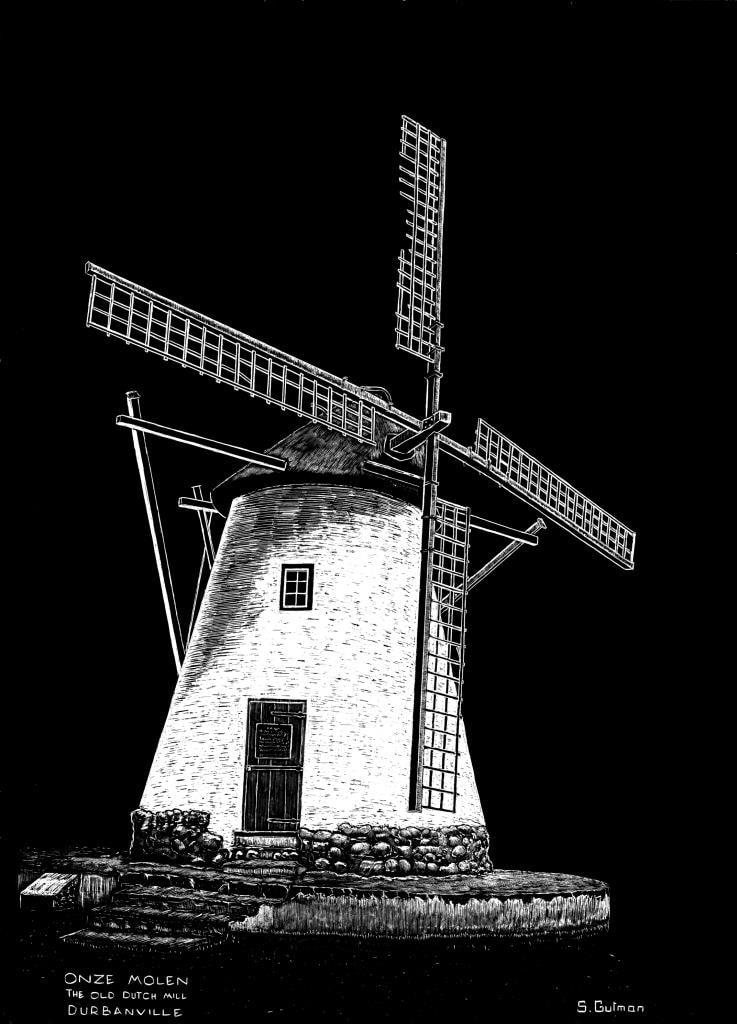The mill was named when Mr B Brinkworth bought the farm on which it was situated in 1963 and his wife named it Onze Molen. Tentative plans for restoration proved impractical and 20 years later, in 1983, Brinkworth sold the property to the Natal Building Society. In the interim, Onze Molen had been reduced to a four metre high trunk with a corrugated iron roof that provided shelter for labourers on the farm. The NBS researched possible restoration with the help of the National Monuments Council and although no plan of Onze Molen was found, its restoration was based on Mostert's Mill, which is of a slightly earlier period. The architect for the restoration was JORDAAN & HARTWIG, Cape Town.
Paul Woolley of Daljosaphat Restorations did a great deal of research and undertook the restoration. The wooden mechanism of the cap was made in the company's workshop, dismantled, transported to Durbanville and reconstructed on site. The cap was thatched on the ground and the entire structure was hoisted into place by crane. The restored mill was officially opened in 1986. It is now the proud centre piece of the Onze Molen Village development. Because it is sited on land designated as public open space, the Durbanville municipality has assumed responsibility for it.

